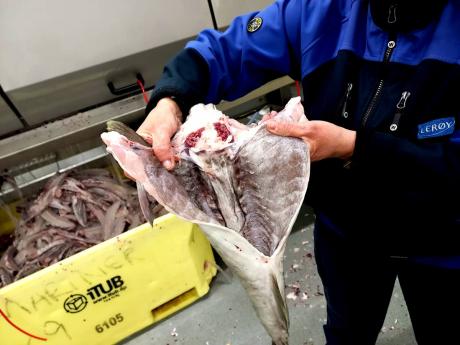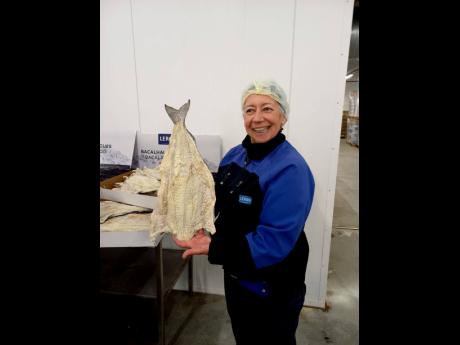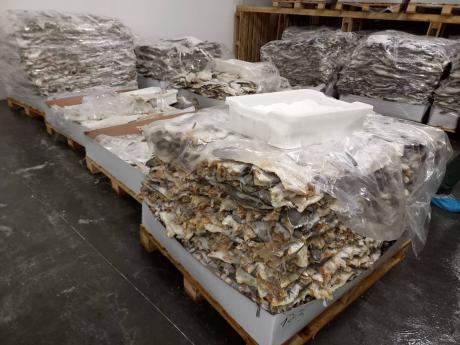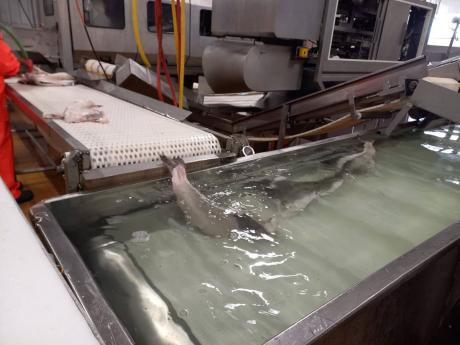No small fry business - Norwegian salt fish is a big deal for Jamaica
Have you ever wondered how salt fish, the protein that makes up one half of Jamaica's national dish, is processed and shipped to our little island?
Well, as part of the Norwegian Seafood Company (NSC) press tour, I had the privilege of touring two of Norway's seafood processing centres; Nordvagen Seafood Aksjeselskap (AS) and Leroy Seafood facility, a 125-year-old processing factory.
The processes at both facilities were quite similar, however, before entering both facilities, the team of journalists and media personnel were instructed to put on white coats, hairnets and shoe coverings. We were also instructed to thoroughly wash our hands as we would be interacting with food that was to be exported across the world. After adhering to the health protocols, we were then taken to the back of the facilities where the loading docks were located. While there, we saw large fishing vessels waiting to have the catch collected. The fish were then taken into the facility and washed. Then they were placed in a large machine responsible for removing the heads and backbones, making the fish flat and creating a better surface area for them to be salted.
The fish were then sent down a channel of water where workers used a suction tube to pull all the blood, after which they were placed in a large container and at the push of a button, salt dropped on each layer of fish. After the container was filled with the salted fish, the fish were placed in a drying room, and depending on the type of fish, would remain there for multiple days. Saithe, the only fish exported by Norway to Jamaica, takes approximately 14 days to dry before it is packaged and exported.
In Norway, fishing is one of the country's largest income generators, and with 4,000 fishing vessels, accounts for 70 per cent of the country's exports. So, despite having six months of winter, cities like Tromso and Hammerfest, which were once small fishing villages, have managed to create a thriving, highly regulated fishing industry, so much so that fisherfolks require a special licence to fish. Fishing is now also one of the highest paid and most sought after professions in the country.
In addition to that the NSC has worked hard to ensure the continuation of the industry by regulating both the quality and quantity of fish captured and manufactured. The country even has what they call 'fishing police' which are the local coast guard that ensure that fisherfolks are obeying the protocols.








































